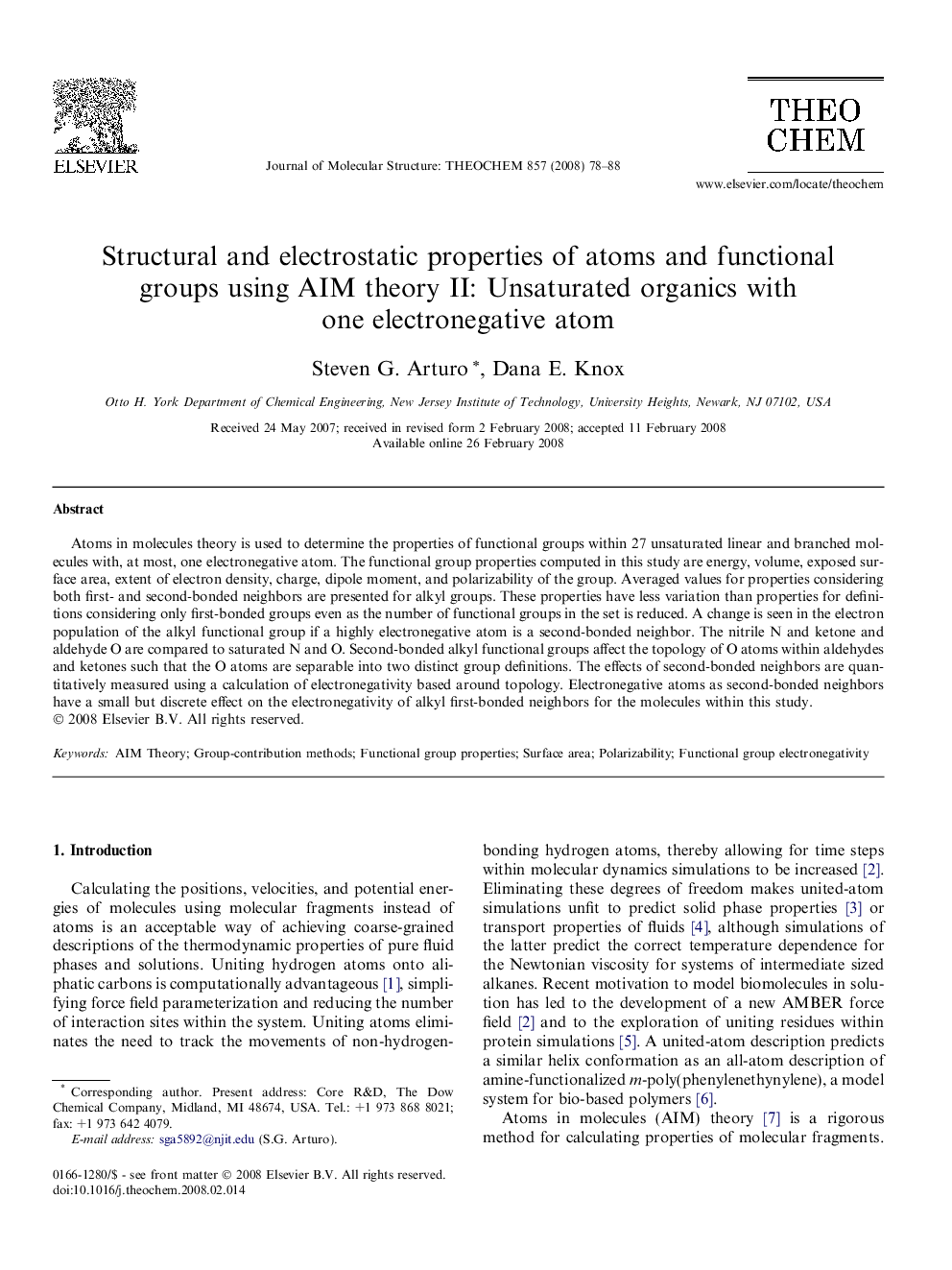| Article ID | Journal | Published Year | Pages | File Type |
|---|---|---|---|---|
| 5418275 | Journal of Molecular Structure: THEOCHEM | 2008 | 11 Pages |
Abstract
Atoms in molecules theory is used to determine the properties of functional groups within 27 unsaturated linear and branched molecules with, at most, one electronegative atom. The functional group properties computed in this study are energy, volume, exposed surface area, extent of electron density, charge, dipole moment, and polarizability of the group. Averaged values for properties considering both first- and second-bonded neighbors are presented for alkyl groups. These properties have less variation than properties for definitions considering only first-bonded groups even as the number of functional groups in the set is reduced. A change is seen in the electron population of the alkyl functional group if a highly electronegative atom is a second-bonded neighbor. The nitrile N and ketone and aldehyde O are compared to saturated N and O. Second-bonded alkyl functional groups affect the topology of O atoms within aldehydes and ketones such that the O atoms are separable into two distinct group definitions. The effects of second-bonded neighbors are quantitatively measured using a calculation of electronegativity based around topology. Electronegative atoms as second-bonded neighbors have a small but discrete effect on the electronegativity of alkyl first-bonded neighbors for the molecules within this study.
Related Topics
Physical Sciences and Engineering
Chemistry
Physical and Theoretical Chemistry
Authors
Steven G. Arturo, Dana E. Knox,
